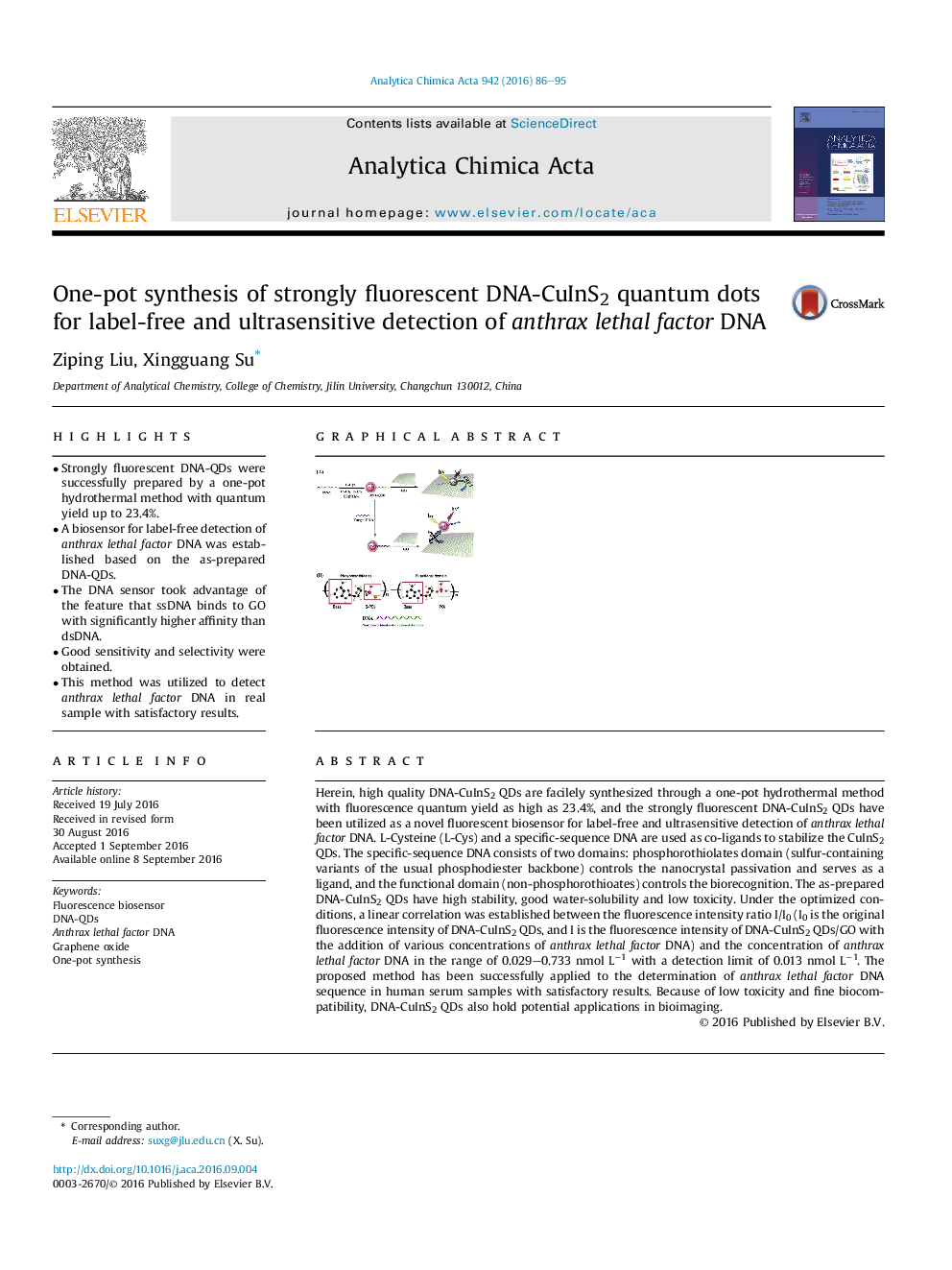| Article ID | Journal | Published Year | Pages | File Type |
|---|---|---|---|---|
| 5131303 | Analytica Chimica Acta | 2016 | 10 Pages |
â¢Strongly fluorescent DNA-QDs were successfully prepared by a one-pot hydrothermal method with quantum yield up to 23.4%.â¢A biosensor for label-free detection of anthrax lethal factor DNA was established based on the as-prepared DNA-QDs.â¢The DNA sensor took advantage of the feature that ssDNA binds to GO with significantly higher affinity than dsDNA.â¢Good sensitivity and selectivity were obtained.â¢This method was utilized to detect anthrax lethal factor DNA in real sample with satisfactory results.
Herein, high quality DNA-CuInS2 QDs are facilely synthesized through a one-pot hydrothermal method with fluorescence quantum yield as high as 23.4%, and the strongly fluorescent DNA-CuInS2 QDs have been utilized as a novel fluorescent biosensor for label-free and ultrasensitive detection of anthrax lethal factor DNA. L-Cysteine (L-Cys) and a specific-sequence DNA are used as co-ligands to stabilize the CuInS2 QDs. The specific-sequence DNA consists of two domains: phosphorothiolates domain (sulfur-containing variants of the usual phosphodiester backbone) controls the nanocrystal passivation and serves as a ligand, and the functional domain (non-phosphorothioates) controls the biorecognition. The as-prepared DNA-CuInS2 QDs have high stability, good water-solubility and low toxicity. Under the optimized conditions, a linear correlation was established between the fluorescence intensity ratio I/I0 (I0 is the original fluorescence intensity of DNA-CuInS2 QDs, and I is the fluorescence intensity of DNA-CuInS2 QDs/GO with the addition of various concentrations of anthrax lethal factor DNA) and the concentration of anthrax lethal factor DNA in the range of 0.029-0.733 nmol Lâ1 with a detection limit of 0.013 nmol Lâ1. The proposed method has been successfully applied to the determination of anthrax lethal factor DNA sequence in human serum samples with satisfactory results. Because of low toxicity and fine biocompatibility, DNA-CuInS2 QDs also hold potential applications in bioimaging.
Graphical abstractDownload full-size image
